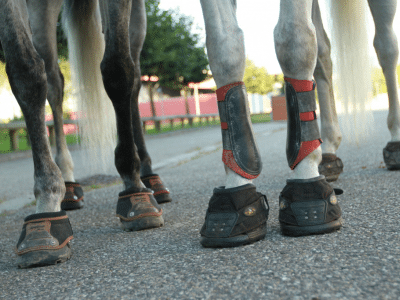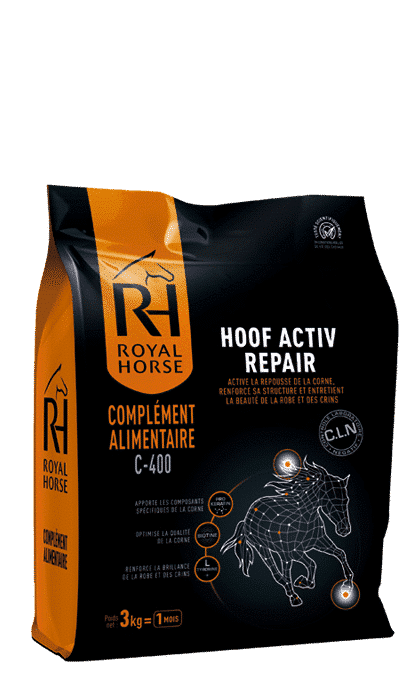Hipposandals, true “shoes” for horses, can be used in a variety of situations to relieve your horse’s hooves. Their use dates back to antiquity, before shoeing was developed and almost completely replaced the hipposandal.
When should I use hipposandals for horses?
For barefoot horses with sensitive horns, whose sole is too sensitive. Some horses can live well barefoot (without shoeing). But some horses have poor horn quality. This problem prevents them from working on hard ground, or on soils with large or small stones. Hipposandals are slipped over the hooves to protect the sole horn from unfavorable terrain. Ideal for unshod horses with fragile horns. To help your horse achieve better horn quality, you can also opt for dietary supplements, often biotin-based. Royal Horse’s C400 hoof supplement can be a good solution for strengthening hoof horn.
To relieve foot problems. Another frequent reason for using hipposandals is related to horse foot problems. For example, abscesses, laminitis, navicular syndrome, etc. In these cases, the sole of the hoof is under heavy stress and sometimes cannot support the weight of the horse. To prevent these pathologies from causing the horse too much pain, hipposandals are sometimes used as an alternative.
To improve performance in sporting events. In endurance events (or very long rides), the horse’s tendons and joints are put under considerable strain. This is due to the vibrations caused by hooves striking different terrains. Hipposandals, often with rubber bottoms, absorb these shocks and reduce vibrations. Their grippy material also prevents slipping on wet ground or tarmac. This makes riding safer for both horse and rider.
How to choose hipposandals?
If you want to use hipposandals on your horse, there are a number of questions to ask. Which size to choose, or which model, as there are so many on the market. Then there’s the question of utility. It could be for use in sporting competitions (dressage or show jumping), endurance competitions, in case of pathology, or for occasional rides.
To determine the size of your hipposandals, simply measure the length and width of each of your horse’s hooves. There can sometimes be size differences between hooves, which is why you need to take exact measurements of each foot. Make sure you measure after trimming, as once the horn starts growing again, the measurements will no longer be valid. If you intend to use hipposandals on a long-term basis, it will be very important to trim your horse’s feet regularly. Otherwise, they can easily come off.

The main types of hipposandals for horses are :
- veterinary hipposandals (for laminitis, navicular syndrome, etc.),
- close-to-the-foot hipposandals (ideal for long rides, as they are very light)
- glue-on hipposandals, particularly useful for horses with shoes off, in transition to barefoot riding
- wrap-around bridles, the most frequently used because of their ease of use.
How long does a hipposandal last?
Many riders ask themselves this question, as the purchase of hipposandals represents a significant budget. However, there is no universal answer to this question. The lifespan of horse shoes depends on a number of factors, such as how they are used, the materials they are made of, the surfaces on which they are used, the conformation of your horse’s hooves, the regularity of trimming, etc. The best solution is to call in a specialist. The best thing to do is to consult a professional, who will be able to guide you towards the model best suited to your application.
Another frequently asked question concerns the length of time hipposandals can be worn: how long can hipposandals be left on the horse’s hooves? Can they be left on permanently? Once again, it depends on the model and the horse! Some hipposandals have fastening straps, which can irritate the horse’s skin over the long term. Also, horse hoof horn grows back quickly. So a hipposandal well adapted to the hoof can quickly fall off if the hoof size evolves.




